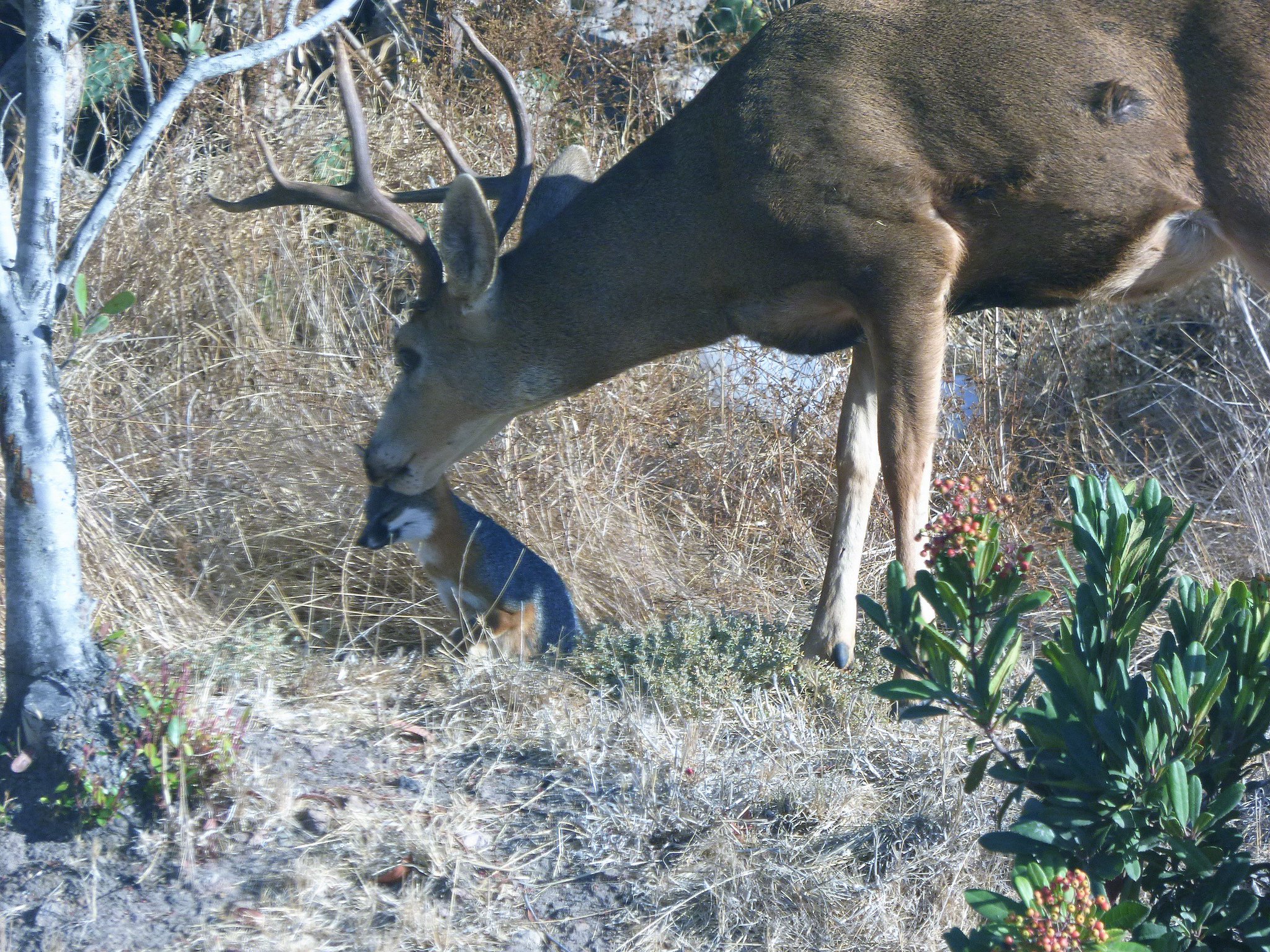When marine biologist Chris Lowe tweeted this photo, taken on Santa Catiline (off the Southern California) where the researcher studying sharks, the shot went viral. The scene of a mule deer (Odocoileus hemionus) licking the head of a urcione the Channel Island (island fox), a species endemic to the island fox, has been compared by many to an approach from the Disney movie.

As long as Mike Cove, biologist and mammatologo, posted a comment more to insider: "At Islands Keys (Florida) such scenes are almost on the agenda," he wrote attaching the photo of a deer licking the face of a cat. "Interesting that happens on the islands - he added - for sure, one way to facilitate the transmission of disease."
In good company. The hidden cameras placed by Cove for research purposes in the archipelago in the southeast United States have documented similar squares, like a deer that looked like frolicking around a peacock or a deer he received a "grooming" on the face by a service raccoon. How to explain these curious animals relationships? And how widespread?
Free and "street". According Cove two could be factors in isolated ecosystems such as Keys and Santa Catiline favor this type of meetings. The first is the almost complete absence of large predators (such as wolves or mountain lions) that makes less timid deer and wary than usual. The second is a geographical reason: the circumscribed environment of the islands and the presence of man which with its leftover food acts as a catalyst, make more frequent intersections between these species.
Who needs it? But this does not explain why the deer are made to lick other small animals. Someone scomoderebbe mutualism observed between some species of fish: but if a raccoon can take advantage of ticks and fleas on the muzzle of the deer, the speech does not work with foxes and cats.
Supplement of salts. A fact: being licked on the face is all in all a pleasant experience (as it seems to understand the expression of the fox); For its part, the deer could take advantage of the salt in the sea breeze carries the friend's hair, and take the opportunity to supplement your diet. But the salt deposits are filled with rocks and vegetation: what need is there to disturb a fox?
The simplest explanation. More trivially, there may be a contact between two curious animals from each other, a chance of random exchange, not necessarily explainable with an institutionalized behavior. All things considered, even animals have different personalities, and sometimes behave oddly. Not that all the deer Santa Catiline lick foxes: it may have been a random scene and all in all - for the biologist who has photographed - lucky.
And it's not as well established that is a good thing: the snout to snout contact can facilitate the transmission of anger, intestinal worms and other forms of parasitic or viral infections.
From Focus
